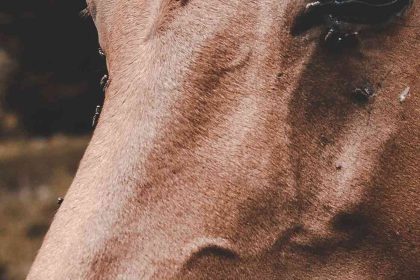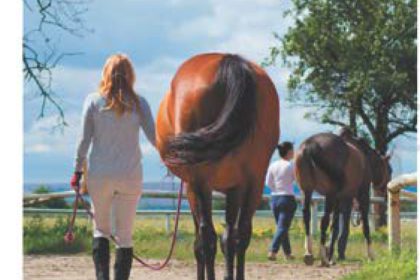WELL KEPT DIY HORSE What do you mean?
For decades owners with horses on ‘Do It Yourself’ yards have been inadvertently feeding too much ( hard feed, roughage and grass) all year round. To compound this problem, many over rug their horses in Winter or rug too early in Autumn, or too late into Spring when it is not really very cold.
Owners also have a tendency to apply neck covers and further layers of rugs in the stable. In polite terms, they keep their horses ‘too well’ which has resulted in a national equine health crisis. An issue not seen in other European countries and other countries further afield.
Lingfield Level 1 & 2 courses aim to provide help and advice for the individual social / leisure horse owner. Many such owners however, have progressed to running their own DIY yard. The small profit these owners earn from such ventures, aims to help them cover the cost of keeping their own horse.
A ‘yard’ is a widely used term used in UK to describe a block of stables and the immediately surrounding area. The DIY (do it yourself) yard is therefore, a block/s of stables – usually adjacent to land for grazing the horses. Quite often the yard and land is rented from a land/property owner who has no involvement in the business. A livery on the other hand is the term used for the actual horse itself as well as the way it is kept. A ‘livery horse’ being kept/stabled at a ‘livery yard’ which is a DIY yard – rather than where the horse is managed by the owner /of the yard is therefore looked after by the owner. In the UK there are no restrictions or requirements by law to owning and running a block of stables or livery yard apart from a minimum age and the UK health and welfare requirements for equines and their housing etc. which are indeed legal requirements.
The DIY yard system offers individual stables (and grazing time in shared fields). Each stable is hired out on a monthly basis by the yard owner/manager to individual horse owners. If the yard is based on a farm, hay and straw may be available on the premises – some yards have fixed arrangements with the farmer. Generally each owner buys in their own feed and bedding from wherever they prefer and is provided with storage facilities at the yard. The owners care for all their horse’s needs 24/7 without assistance. Some find our Equine Feeding & Nutrition course useful. There are pros and cons to the various arrangements available. Lingfield offers a course specifically covering the business aspects of a Livery Yard for those aiming to set up their own yard.
The clients (the owners of the livery horse) often have very limited knowledge of horse care so the yard owner or manager is sometimes called upon to assist and advise. Sadly for the horses, sometimes the yard owner has limited knowledge themselves. However, to someone like the horse owner, who has even less knowledge, that may not be apparent. Injuries and ailments can also be an issue in yards where there is limited knowledge for this the Equine First Aid & Ailments course gives professional advice.
The aim of our courses therefore, is to provide both the horse owners and the yard owner with information on how to keep a horse should it be stabled for nearly 24 hours a day. Some courses cover equine first aid or rider confidence, schooling or equine behaviour – all of which come under management of the horse. For this we offer the Intermediate Diploma in Equine Management
You may ask – Why do some owners keep their horses stabled for so long? The leisure horse owning population in the UK has grown enormously. The human population is also growing and along with that the cost of properties and land.
For many stable/yard owners, the land they own is quite limited in size (basically it is too small, or too small for the amount of horses being kept on it). This means in Winter especially (when our rainfall is high and the ground gets soft and soggy), the land gets churned up by the horses feet if they are turned out all day. The grass roots are killed and that means less grass next Summer – so yard owners have no alternative but to restrict the turnout time.
Why are so many horses in UK kept at DIY yards? Although this is common in UK it is not the case in other countries. In UK however, it is the cheapest way to keep a horse and some prefer total control – which can be good – although it is sometimes detrimental to the horse’s welfare. Owning a horse is not cheap but few realise this prior to ownership.
These DIY owners often work full or part time, and /or have a family and do the horse themselves – sometimes with the occasional help of the yard owner or a friend. Winter can be difficult for these owners because the days are short. It gets light so late in the morning and dark so early (4pm or earlier in Scotland) which limits the working owners riding / exercise time and we have to remember that their horse may well be stabled most of the day owing to restricted land ownership.
Leisure horses in UK do of course compete, but it might be just once or twice a month mostly through the Summer at lower standards (what we call ‘local’) competitions. This would not be classed in any way as a ‘competition horse’. This local competing regime does not require much more energy than when riding out regularly – but new owners are not always aware of this & tend to overfeed energy foodstuff. Seed hay & energy feed would be fed to the horse attending regular, high standard competitions on a very regular basis with the aim of qualifying for top competitions.
In other countries – especially warmer climates the feeding of equines may be slightly different. UK has a huge equine industry now – with an enormous amount of international equine feed companies producing a huge variety of different feeds. In some countries the choice is limited and local feeds might be used rather than imported products.
WHAT TYPE OF ROUGHAGE: In UK our roughage/fibre feed is mainly hay and packaged new hay (haylage) unlike Tef and Lucern which are fed in hotter climes. The grasses in UK meadow hay are of mixed good and poorer varieties. Hay is the main bulk feed for horses in UK. It does not provide a great deal of energy, unlike seed hay and the other feeds we give in a bucket. This hay is the roughage, fibre and bulk required in large quantities by the horse on a daily basis. We rarely if ever feed ‘seed’ hay to the leisure horse. Seed hay is often a single variety hay e.g. Timothy). It is cut early before seeding so is full of energy – this is fed to ‘competition horses’. The average leisure horse can work on meadow hay/haylage alone. Behaviour issues:
Can often be traced to feeding – and turnout problems. Regretably many horses suffer with incorrect feeding which results in quite serious behaviour issues and owners who find their confidence failing. Turnout is often a contributory factor. Lingfield Equine Psychology & Behaviour course can help people understand their horse and get to grips with how to approach problems.
©Lingfield Correspondence 2020



Receive latest news and industry insights straight to your inbox.